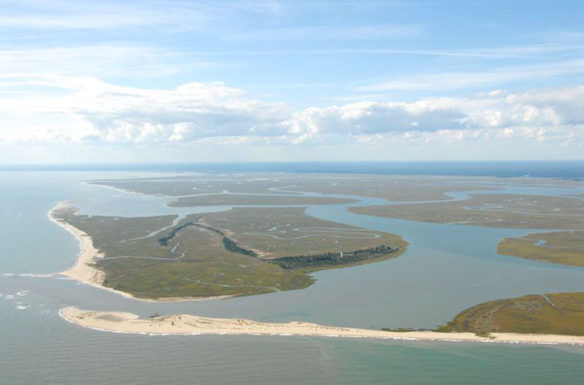
Cape Island in foreground, Cape Romain National Wildlife Refuge, South Carolina. Photograph courtesy of: Mary Edna Fraser, 2006 ©.
Excerpts;
More than half of South Carolina’s shoreline is eroding under an onslaught of rising seas, pounding storms and other scouring forces.
These and other recent findings cast new light on the nature and fate of our coast…
Read Full Article; Post and Courrier (02-11-2018)
South Carolina not doing enough to protect beaches, report says; Post and Courrier (11-07-2017)
South Carolina’s beach preparations are barely adequate to deal with worsening erosion, sea rise and intensifying storms, according to the latest Surfriders Foundation report…
Battling erosion an endless job for South Carolina beach towns; Post And Courier (04-23-2017)
In South Carolina, beach renourishment is a never-ending job…
Coastal erosion needs our attention, South Coast Today (01-04-2016)
Robert Young: Seaward of Common Sense? SC Needs to Put an End to Building on the Beach, The State (02-11-2015)
South Carolina’s beautiful beaches are a vital component of this state’s economy. Managing them wisely is critical to the health of the economy and to ensuring that state and local tax dollars are not wasted on futile efforts to protect homes needlessly placed in areas of obvious high hazard…
Coastal geologist criticizes beach renourishment efforts; By Robert S. Young, PhD; The State (08-17-2016)
Rob Young, who heads the Program for the Study of Developed Shorelines at Western Carolina University, said the government is subsidizing coastal development with renourishment money – and that’s costing taxpayers. Communities across the country have spent millions of dollars renourishing beaches. Those efforts encourage people to rebuild after every major hurricane…
Rethinking Living Shorelines, By Orrin H. Pilkey, Rob Young, Norma Longo, and Andy Coburn;Program for the Study of Developed Shorelines / Western Carolina University, March 1, 2012, Nicholas School of the Environment, Duke University
In response to the detrimental environmental impacts caused by traditional erosion control structures, environmental groups, state and federal resource management agencies, now advocate an approach known as “Living Shorelines”that embraces the use of natural habitat elements such as indigenous vegetation, to stabilize and protect eroding shorelines.









